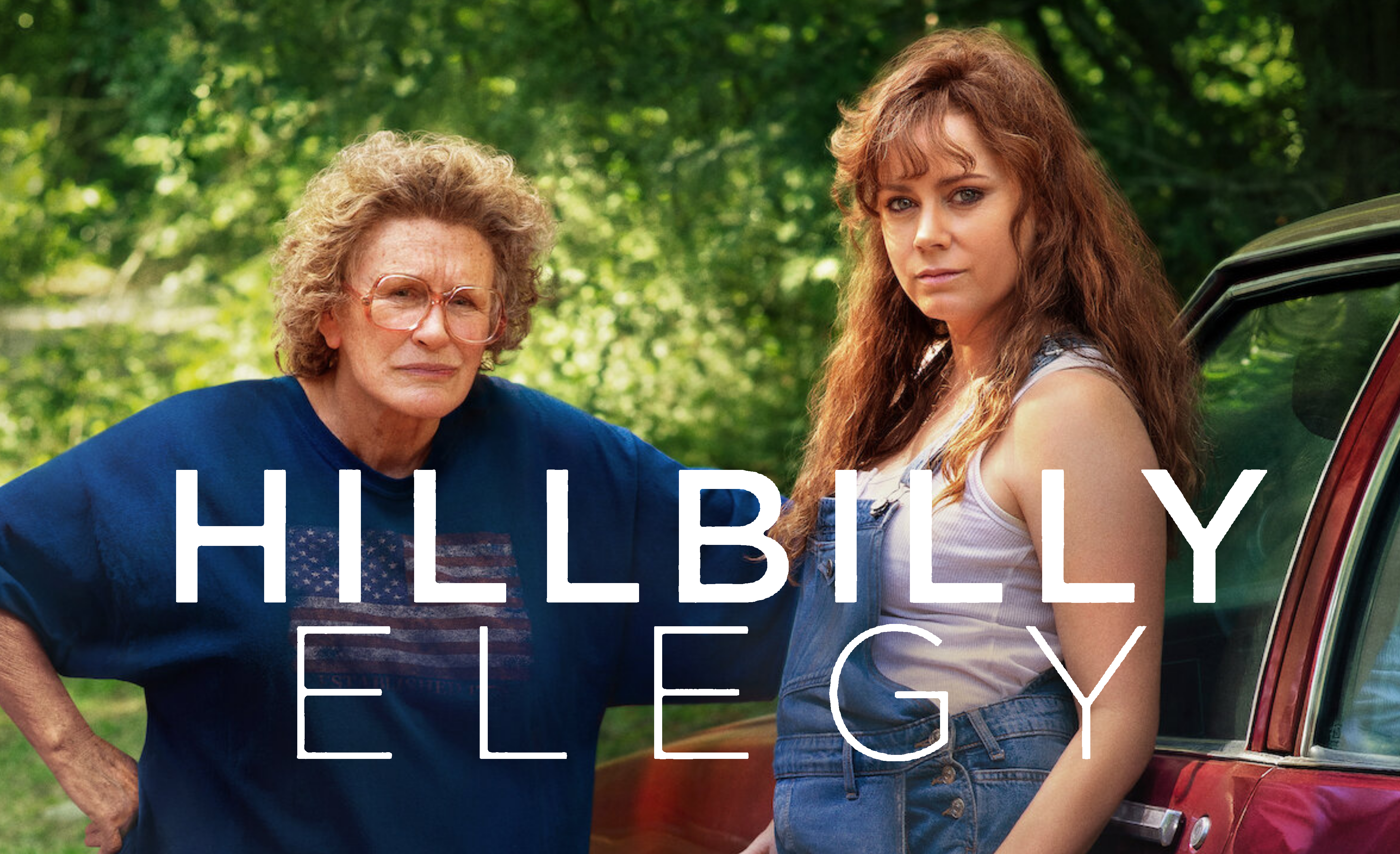Ron Howard’s “Hillbilly Elegy” (2020) is a somewhat strained, compassionately told story about the power of family. The film chronicles United States Senator J.D. Vance’s upbringing in a small Ohio town stricken by poverty and drug abuse, adapted from Vance’s 2016 memoir of the same name.
Vance recently gained political attention as former President Donald J. Trump’s vice president pick for the 2024 election. His relatively laid back demeanor at the Oct. 1 debate with Vice President Kamala Harris’s running mate Tim Walz stands in sharp contrast with Vance’s history of inflammatory conservative rhetoric.
The movie’s nonlinear narrative alternates between scenes from Vance’s youth and his adulthood. The latter timeline begins when Vance (played by Gabriel Basso) is pulled away from his summer internship interviews during his Yale Law School years when his sister, Lindsay (Haley Bennett), calls about their mother, Beverly Aikins (Amy Adams), being hospitalized after a heroin overdose. Aikins had struggled with drug addiction throughout the siblings’ youth, and her habits often negatively affected her parenting. Yet, it’s clear that Aikins loved her children, as she takes care to maintain Easter family traditions, presumably to create memories for them that we later learn she never experienced as a child.
However, Aikins is also emotionally volatile and quick to violence. This places undue responsibility on Vance and Lindsay, who bear witness to and suffer through her outbursts. In one particularly heart-wrenching scene, Vance runs out of his house mid-conversation upon hearing police sirens apprehend Aikins in the middle of the street. Barefoot and wailing, she bleeds from her wrists as policemen try to restrain her. Her breakdown is on display for the entire street, including a crying teenage Vance. (This January, Aikins will reach her 10-year anniversary of sobriety.)
The relationship between Vance and Aikins is the primary catalyst in the plot of “Hillbilly Elegy.” There is a visual motif repeated across decades in the movie’s timeline: Aikins lies supine on a bed, debilitated by drugs one in one way or another and reaches her shaking hand out for her son’s. This image is representative of their toxic relationship, with Vance’s mother always taking and never giving.
The viewer’s indignation on behalf of the young Vance is sometimes alleviated by sympathy for Aikins, brought about almost single-handedly by Amy Adams’ masterful acting. Her character’s fragility is visceral in every scene — even when Aikins appears stable, Adams infuses the scene with ominousness. The compassion that the film grants Aikins is evident almost exclusively via the rawness with which Adams carries herself.
Mamaw, Vance’s maternal grandmother, is a vital figure in Vance’s youth. Flashbacks reveal her violent nature during Aikins’ childhood, hinting at the onset of Beverly’s own addiction. Nevertheless, Mamaw, played by an outstanding Glenn Close, is a force for peace in Vance’s home life, bailing Aikins out and protecting the siblings from their mother.
In one particularly poignant scene, Aikins asks Vance to urinate in a cup so she can pass the drug test required to keep her nursing license. Vance is affronted by the request and upset when Mamaw asks him to comply with Aikins’ plea. Here, the teenage boy makes the fairest attack on his grandmother, confronting her about her lenience with her daughter’s addiction. Mamaw tells Vance he needs to help his mother because “family is the only thing that means a goddamn.” Close’s acting is chilling in this moment — if I was Vance then, I’d be convinced.
The film’s references to Aikins’ own trauma from her parents in an attempt to provide backstory for her behavior are useful but ineptly woven into the narrative. As a whole, however, I thought the nonlinear narrative was well done: not groundbreaking, but an effective way to frame Vance’s life’s journey.
In some instances, mostly those featuring Freida Pinto as Usha Chilukuri, Vance’s then-girlfriend, and Gabriel Basso as the adult Vance, the writing failed the actors’ true capabilities. The emotion was there, for example, as the audience observed Vance struggle to bare the more unpleasant parts of his past to Chilukuri, but it was often muted by dialogue that felt unrealistic and discordant with the gravity of the situation.
In spite of this, the film’s portrayal of their relationship struck me as exceedingly heartwarming. The most profound, impactful scenes invariably involved Adams, Close or both actresses. It felt to me almost like they altered the quality of writing depending on the degree of fame of the actors involved.
To my great dismay, I will still be 17 years old on Election Day. If I could, however, I would confidently cast my ballot for Vice President Kamala Harris. I have no plans to set aside all the issues on which I disagree with Vance simply because I respect his life’s journey.
Nevertheless — I’m talking to all you civically engaged Stanford students out there right now — I think everyone, regardless of political affiliation, should watch “Hillbilly Elegy.” I cried — I really cried, three separate times in broad daylight on the first floor of Green Library watching it. It is by no means a perfect film, nor is Vance a perfect politician. Still, today’s political polarization begs for art like this film that inspires compassion; only we as an audience can decide whether we will rise to the occasion and seek it out.
Editor’s Note: This article is a review and includes subjective thoughts, opinions and critiques.
